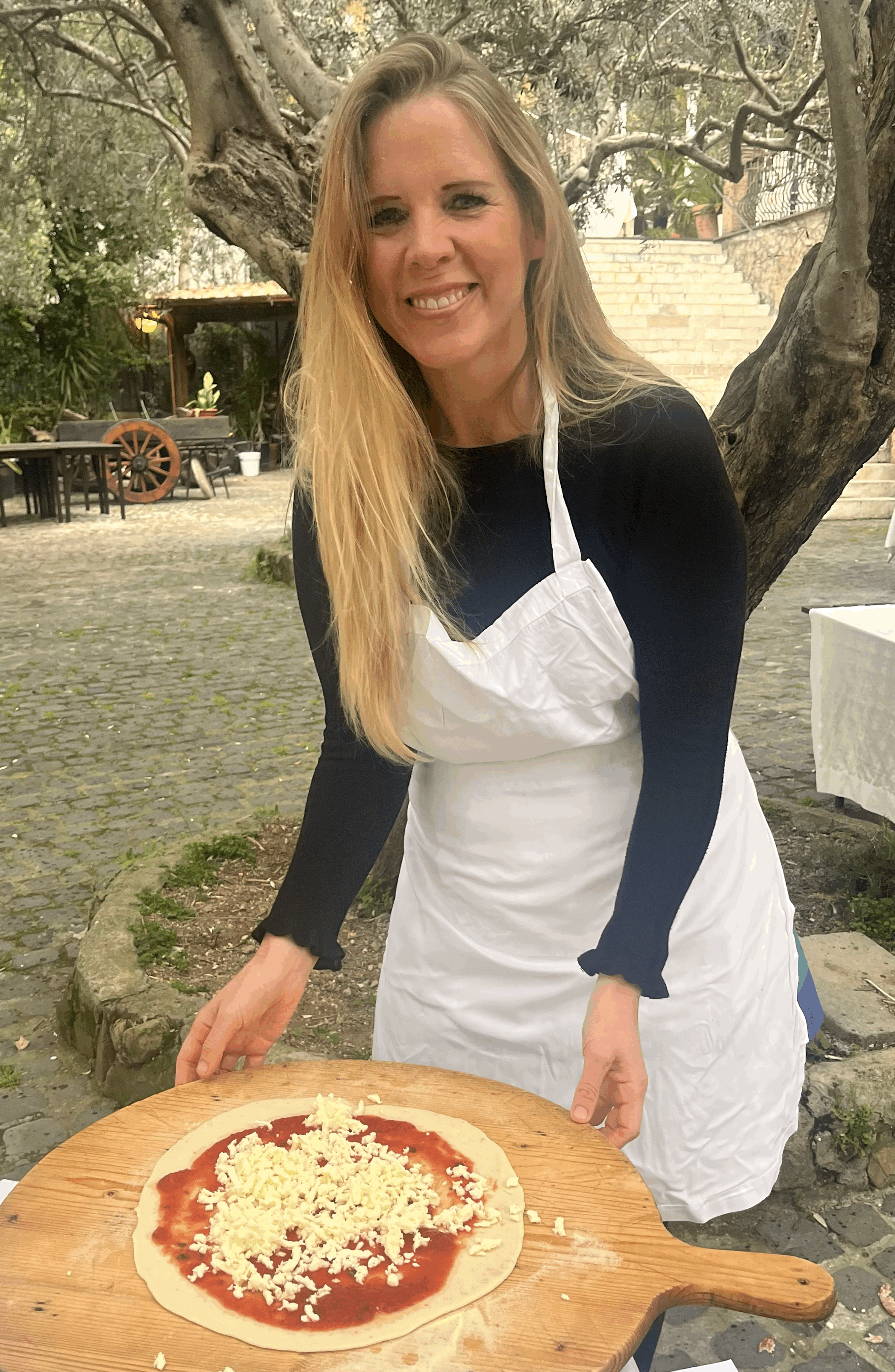That’s amore: An Italian food story
There is a phenomenon called Paris Syndrome, a phrase coined by a Japanese psychiatrist, Hiroaki Ota in the 1980s to describe shell-shocked Japanese tourists who had been sold a vision of Paris via magazines and films, only to arrive and find the sights and sounds and perhaps the, ahem, legendary Parisian waiters, were a little too ‘real’ for the movie version they had in their heads.
There perhaps should be an equivalent in Italy called Alfredo syndrome. It can often be something of a rude awakening to find that the dishes presented as Italian in other countries are not in fact recognised by most Italians. American clients who arrive on a quest to eat Fettuccine Alfredo all over Italy, discover that it is far less-known about in Italy and only encountered on the menus of touristy places who, after the hundredth American customer asked for it, understood that perhaps it might be a good idea to include it.
If you go to Rome, you can go to a famous restaurant called Da Alfredo, the birthplace of this dish, and eat wonderful fettuccine from a large parmesan wheel. And if the waiter takes a fancy to you then you will be presented with the golden fork. The restaurant’s walls are littered with black and white photos of the American Hollywood stars who frequented the place in the 1950s, thereby spreading the word in the US, but it remains more of an Italo-American dish than Italian.
The Brits’ favourite, spag bol? Not Italian. They eat tagliatelle al ragù. Tagliatelle, allegedly based on Lucrezia Borgia’s long golden locks, is the traditional pasta of the north-eastern Bologna region from where the ragù sauce hails, whereas spaghetti (literally thin pieces of string) is a pasta more associated with Rome and the south. Italians remain very loyal to their region in all things, particularly cooking. Specific pasta lengths and shapes go with specific sauces. Ie, spaghetti with mussels (spaghetti alle vongole) not penne with vongole. In fact, not penne lisce with anything as far as most Italians are concerned. They hate penne lisce and during the Pandemic, when the shelves were cleared, the only pasta left on them, was in fact penne lisce.
English Translation: “I continue to look at this photo taken earlier at the supermarket and reflect on the fact that the great equaliser of this virus are Penne Lisce, that Italians find repulsive even when in a state of panic and preparing for the apocalypse”
Post credit @diodeglizilla
And brace yourselves….Macaroni cheese (in British English parlance) or ‘Mac’n’ cheese (in American parlance), is not Italian. There are similar dishes, such as ‘cacio e pepe’ (a famous Roman dish), but the dish known to and beloved by the UK and US audiences, not Italian, even down to the spelling. In Italian it’s spelt ‘maccheroni’. And in Italian certain regions are given certain nicknames. The Tuscans are the ‘mangiafagioli’ (the bean eaters) and it is the Neapolitans who are the ‘mangiamaccheroni’, the maccheroni eaters.
The true altar of Italian religion is not in St Peter’s, but at the kitchen table. It’s ironic that for a country perceived as being laid back about almost everything else, there is a dogmatism to the rules around food. From the pasta length and shape dictating what works and doesn’t, Italians will often (indiscreetly) disapprove of anything that is not as Nonna or Mamma served up. The true commandments in Italy go something like this:
Thou shalt not murder a pizza by putting pineapple on it
Thou shalt not put meatballs on spaghetti
Thou shalt not drink cappuccino after 11am and never at the end of a meal
Thou shalt not put cream in a Carbonara
Thou shalt not put chicken on pasta. Ever.
Thou shalt not dress a salad with ‘Italian dressing’ mainly because it’s not actually Italian. Italians dress their salad with olive oil and balsamic.
Thou shalt not dip your bread in olive oil and balsamic vinegar.
Thou shalt not ask for peperoni pizza unless expecting peppers on your pizza. Peperoni doesn’t mean sausage in Italy, it means bell peppers. Salami is the closest approximation, but it varies all over Italy.
Thou shalt not order garlic bread ( because, you’ve guessed it, it’s not Italian)
Thou shalt not miss off the vowel off the end of Italian words, including food: prosciutto, mozarella.
There are even rules as to the running of the meal. You begin with the antipasti, a selection of mozzarella, prosciutto, or, if you’re in Rome, maybe some fried vegetables in batter or some Jerusalem artichoke. It’s then onto the primo piatto (the first course). The primo is either pasta or risotto and not a huge portion; about 50g/2oz worth. Then it’s onto the secondo piatto, either meat or fish, then salad, then fruit and/or dessert, then coffee and then a digestivo. Phew!
In fact, in Italian, when you are fed up or done with something, you talk about being ‘alla frutta’ because you are, quite literally, fed up (and done) by the time you get to the fruit. And in Italy, salads, coffee and digestivi have a more functional role in the meal, given how much white pasta and bread is consumed there…
It is perhaps worth injecting in here that in Italian there is only one word for history and story: storia. In many ways this is a more accurate state of affairs. One person’s history is indeed another person’s idea of a story and will constantly be revised and embellished depending upon who tells the story. As an example, in Tuscany there is no salt in the bread. It is therefore entirely devoid of taste and leaden. Will the Tuscans change it. No! Why not? Well, it’s traditional you see. But what’s curious is that no one can quite agree on the reason behind this tradition. Was it because Pisa blockaded Florence’s salt supply in the Middle Ages and the Florentines retaliated by making their bread without salt? This seems unlikely given that Tuscan tasteless bread is a joy to experience throughout the region. Or is it because there is already plenty of salt present in the soups and stews which comprise so much of Tuscan cuisine? No one can be quite sure and no one cares. The important thing is that it is tradition and so it must be adhered to.
Italians are rightly proud of their food; it is delicious. But it is worth noting that dishes that they believe to date back to the Romans, are in fact, much more a result of rebranding and repackaging. Tiramisu, the beloved Italian dessert (meaning ‘pick me up’) is a dish that dates back to…1981. Panettone, the delicious boxed Christmas cakes that you see all over Italy (and beyond) in December, before the 20th century was a hard flatbread with a few raisins in it before Motta (one of the biggest panettone producers) created the dome shape you see everywhere now. A bit of clever marketing and rebranding and a new ‘tradition’ is born.
And perhaps it is this which best exemplifies it all. If it’s a ‘tradition’, that’s all that matters. Food is as woven into the Italian identity as humour is into the British. Brits are appalled to be told “Oh my God, I just love British humour. Mr Bean and Benny Hill are so funny”. It’s as horrifying to Brits that people should think of Mr Bean or Benny Hill as classic British humour, as the notion of drinking a cappuccino after a meal is to an Italian or the idea that some of their most classic dishes do not date back to antiquity. It goes to the core of people’s identities.
The unsuspecting foreigner ordering their cappuccino after 11am, despite being commonplace in the rest of the world, just confirms what every Italian knows: no one knows how to eat (or drink) properly apart from Italians. And if you really want to see their disgust, order a cappuccino at the end of a meal, or, perhaps do as one client once did and asked for cream for her coffee. The waiter’s response “But why?” He simply could not understand why she would do that and it took quite some convincing to get the cream.
Italian food itself is something of a misnomer. In Venice you can dine on goulash and strudel. In Sicily on couscous and Arabic spices. In Milan butter and cheese sauces abound, whereas tomatoes form the basis of most of the southern way of cooking. Italy is a young country (‘born’ in 1861), so people are first and foremost attached to their local area. ‘Campanalismo’ is the term used and it’s the idea of belonging to your local bell tower (campanile) as they have them throughout Italy. This means each region has its own way of speaking, its own traditions and festivals and, most importantly, its own way of eating.
‘Just one cornetto’ you hum along to the sounds of ‘O Sole Mio’, as you think of Italy (well, you do if you’re British and of a certain vintage). And yet if you walk into a cafe in Italy and ask for a cornetto, you will be given a croissant. They do have the ice cream too, but you would have to specify a ‘Cornetto Algida’ (Algida being ‘Wall’s in the UK).
Breadsticks are not the thick, almost baguette-like breads found in Olive Garden, rather they are the thin ‘grissini torinesi’ denoting where they come from (Turin aka Torino in Italian) although Italians would simply say ‘grissini’.
And at the time of writing this article, in a nod to the branding genius Signor Motta, Signor Wait and Signor Rose (Waitrose being an upmarket UK supermarket for my non British readers), have created a ‘Hot Cross Bunettone’. Hot Cross buns, a UK (delicious) Easter bun, given something of an Italian makeover. The Italians have their own Easter cake, the Colomba di Pasqua (meaning Easter Dove) and would no doubt be horrified at the genetic modification of their foods by a country whose reputation for food is only surpassed by its reputation for dental care.
You may now feel some panic at your forthcoming Italian holiday, worrying about all these rules and regulations. But my advice has always been the same. If you really want to get into the Italian spirit, ignore all the rules and regulations and do exactly what you want to do!









